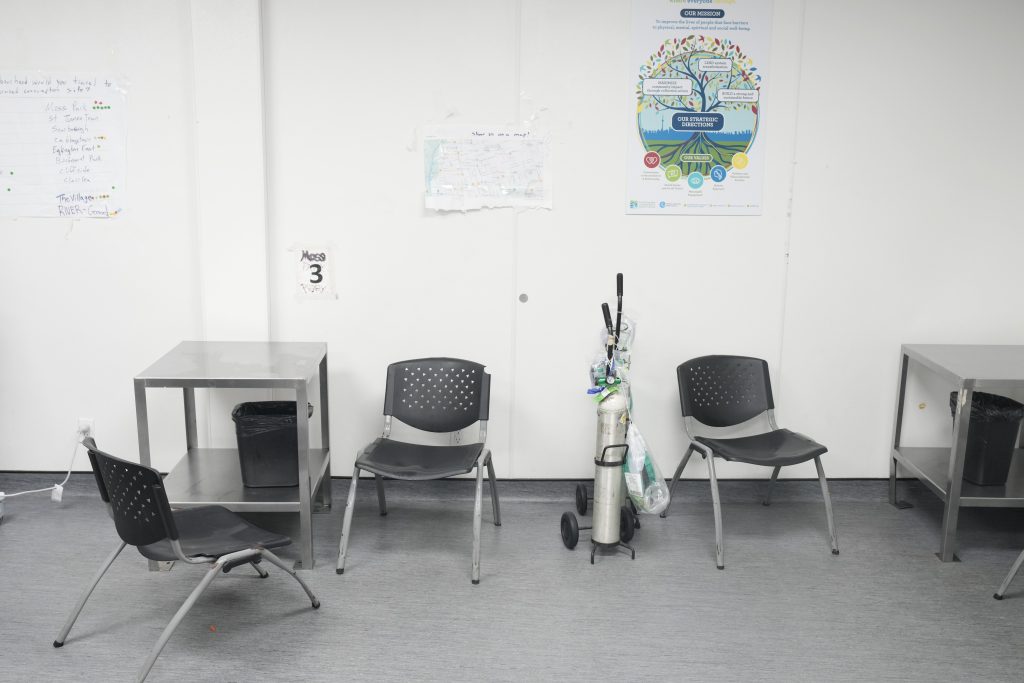Biologist fears extent of bird mortality may grow after N.L. oil spill
Posted November 22, 2018 6:59 am.
This article is more than 5 years old.
ST. JOHN’S, N.L. — At least 15 oiled seabirds have been spotted after Newfoundland’s largest-ever offshore oil spill, but a biologist says past spills indicate the number could be in the thousands.
Husky Energy reported the sightings on Wednesday and confirmed one dead bird since an estimated 250,000 litres of oil spilled into the ocean on Friday during an intense storm.
The SeaRose platform was attempting to restart production when there was an equipment failure in a subsea line that released the oil.
Experts on seabirds say an estimate on the number of birds killed from oiling could be months in the making, but is likely to grow.
Gail Fraser, a leading seabird biologist at York University, said even a small number of oiled bird sightings are cause for concern and are likely a sign of much wider harm.
“The fact that they have found oiled birds means that there’s probably a lot more oiled birds out there,” Fraser said.
Prior oil spills have ended up with estimates of bird deaths that have grown into the thousands, she said.
The 2004 Terra Nova spill that released 165,000 litres of oil into the ocean is estimated to have killed around 10,000 birds.
The biologist noted the Terra Nova incident spilled less oil into the ocean, but it happened at the same time of year as the latest incident, meaning similar numbers of birds like murres and dovekies would have been in the area.
Fraser said “millions” of birds migrate to the region form the Arctic around this time of year, and the weekend’s rough conditions mean getting an accurate count of killed birds may be impossible.
“The conditions were terrible and that makes it a challenge to get good estimates of how many seabirds might be killed,” Fraser said. “It becomes kind of a hand-waving exercise and doing our best guess.”
The region’s birds are particularly sensitive to oil pollution, Fraser said. The birds can die of hypothermia if even a small amount of oil slicks their plumage.
They also have low reproduction rates and long lives, meaning a large hit to the population has a big impact.
Fraser thinks these characteristics are not always reflected when companies are fined for hurting seabird populations.
Syncrude Canada was fined $3 million in 2008 when more than 1,600 ducks were killed after landing in a tailings pond. By comparison, Petro-Canada was fined $290,000 for the Terra Nova spill believed to have killed 10,000 birds.
“To kill 10,000 seabirds is a big deal ecologically and the fine should reflect that.”
Scott Tessier, chief executive of the Canada-Newfoundland and Labrador Offshore Petroleum Board, said no oil sheens were spotted on the water on Monday or Tuesday, meaning the oil has likely broken down to the point that it cannot be cleaned up.
The board is now focused on wildlife monitoring and its investigation into the incident.
Operators in Newfoundland’s offshore industry are responsible for following their own safety and environmental plans, and the regulatory board monitors and investigates when necessary.
Trevor Pritchard, senior vice-president of Husky Energy in Atlantic Canada, said his team followed the company’s plans and procedures, and his company is investigating what caused the equipment to malfunction.
“We’ve seen nothing that tells us we did not follow our internal procedures,” Pritchard said.
Husky provides the procedures to the regulatory board but a Husky spokesperson said in an email that the company “does not disclose its specific operating procedures publicly for security and commercial reasons.”
Pritchard says Husky won’t restart production until he has “full confidence” in the integrity of the subsea system.
“Nobody wanted to see this incident happen. It’s a bad day for us. Can we change things, yes we can. I don’t know what they are yet,” Pritchard said.
Holly McKenzie-Sutter, The Canadian Press








